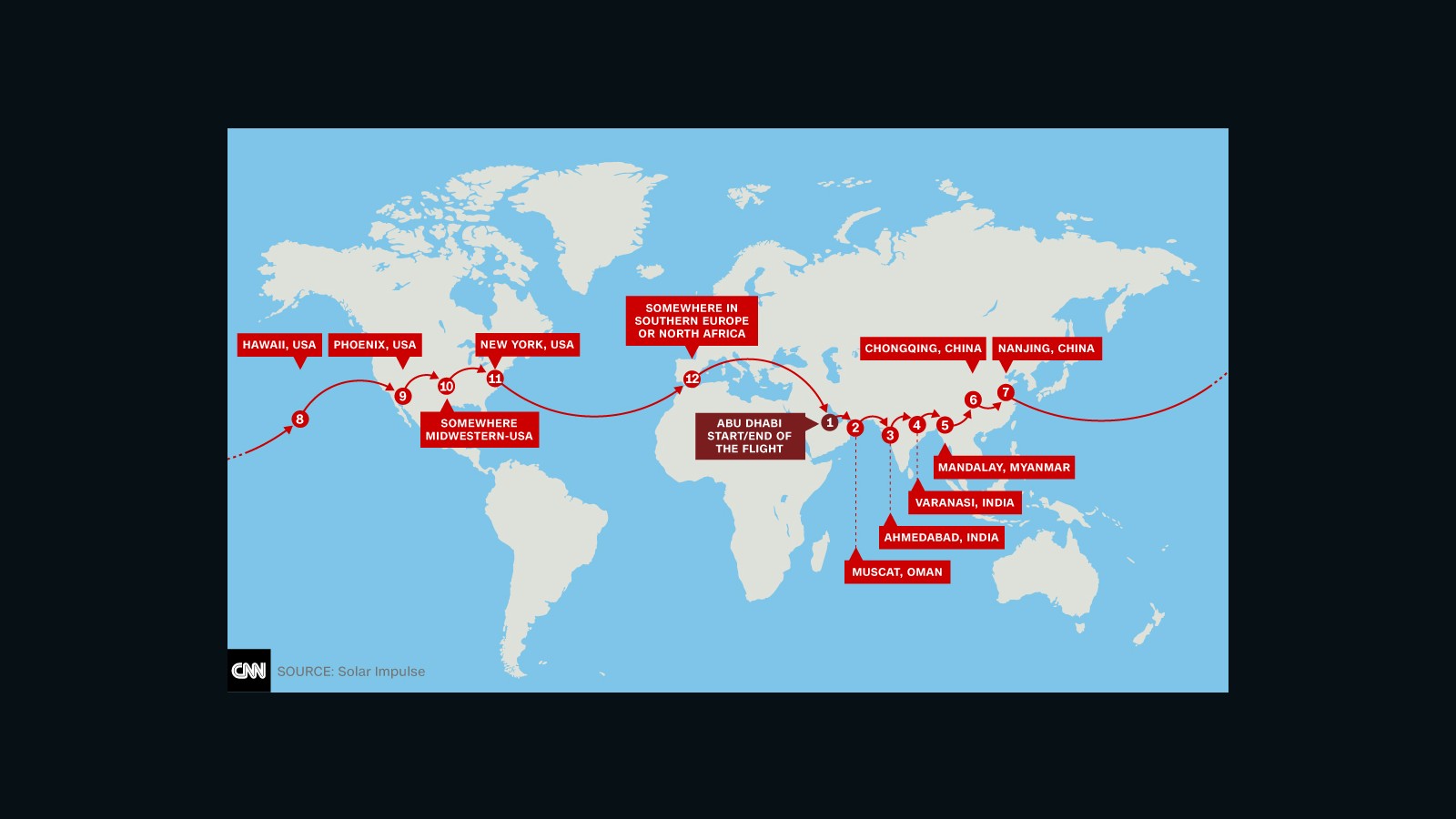What was supposed to be an
overnight pit stop in the southwestern city of Chongqing has now
stretched into a two-and-a-half week stay.
It's
an unexpected layover that is testing the patience of the pilots and
more than 60 team members, just a quarter of the way along a journey
that will cover some 35,000 kilometers (21,748 miles) over five months.
"You
can believe that your will can influence the weather," says pilot
Bertrand Piccard, who comes from a long family line of explorers. But
"then you'll be really disappointed because it doesn't work.
"Or you just know that it's an adventure you do with the forces of nature."
 |
Piccard,
along with Andre Borschberg, a Swiss engineer, are taking turns flying
the single-seater aircraft, which took off from Abu Dhabi on March 9 and
has successfully flown through Oman, India, and Myanmar.
There
is much at stake. Their mission, which the pilots say is aimed at
proving the power of renewable energy, and inspiring innovation, has
been 12 years in the making. In many ways, it has become Piccard and
Borschberg's raison d'etre.
Small window for departure
But so far, the Solar Impulse 2 has been spending a lot of time on the ground.
The
latest setback came when a Thursday takeoff was canceled, because the
cross winds in Nanjing, the plane's destination, were forecast to be too
strong around its expected landing time.
Because
of its weight, at just 2,300 kilograms -- about the same as a large SUV
-- the aircraft needs near perfect weather conditions, including cross
winds of less than 4 knots, or about 7 kilometers an hour, in order to
fly.

Solar plane starts second leg in trip around the world 03:27
While the team is used to waiting, they are clearly eager to move on.
"Our boss is the sun," says Solar Impulse spokeswoman Claudia Durgnat.
Durgnat
says there may be a tiny window ahead, with the next possible departure
from Chongqing on Tuesday. "It's not good before, and the days after
don't look very clear."
Even with the delay, Durgnat says, the plane technically isn't behind schedule.
READ: Solar Impulse 2 completes first leg
That's
because the team needs to wait until the end of the month for the
northern hemisphere days to get longer, before the plane can venture
across the Pacific Ocean to Hawaii.
With
more than 17,000 solar cells along the tops of its wings and fuselage,
the Solar Impulse 2 stores up energy during the day, in order to power
the motors that carry it through the night, typically at speeds no
faster than a car on a highway.
Preparing to cross the Pacific

Swiss
pilot Bertrand Piccard and his compatriot pilot Andre Borschberg pose
for a picture before flying with the Solar Impulse 2 from al-Bateen
airport in Abu Dhabi on March 9, 2015.
Inside
a specially constructed tent at the end of the runway at Chongqing
International Airport, a skeleton team of less than a dozen people works
to complete the day's tasks. The rest of the crew has been waiting for
weeks in Nanjing.
Even with the extended stay, no time is wasted.
Piccard
spends a few hours of the afternoon in the cockpit, training to prepare
for the Solar Impulse's crossings over the Pacific and Atlantic Ocean,
what the team calls "the moment of truth." The plane will then return to
Abu Dhabi, where it had taken off.
Nearby,
two technicians repair a couple of the flight computers, which display
critical information in the cockpit, punching extra holes in their
casings so they don't overheat.
Meanwhile,
Borschberg has returned to Switzerland to rest and get medical
treatment for a migraine and a skin condition. The team expects him back
in China early next week.
Borschberg is still scheduled to fly first leg of the Pacific crossing, which could last up to five days and nights.
"The airplane is ready. The mission control center is ready. We've been waiting for that moment since so long," says Piccard.
Borschberg
and Piccard, who piloted an earlier version of the plane across the
U.S. in 2013, are no strangers to adventure. Borschberg is a former
fighter pilot, and Piccard was part of the first team to circumnavigate
the earth nonstop in a balloon in 1999.

No comments:
Post a Comment